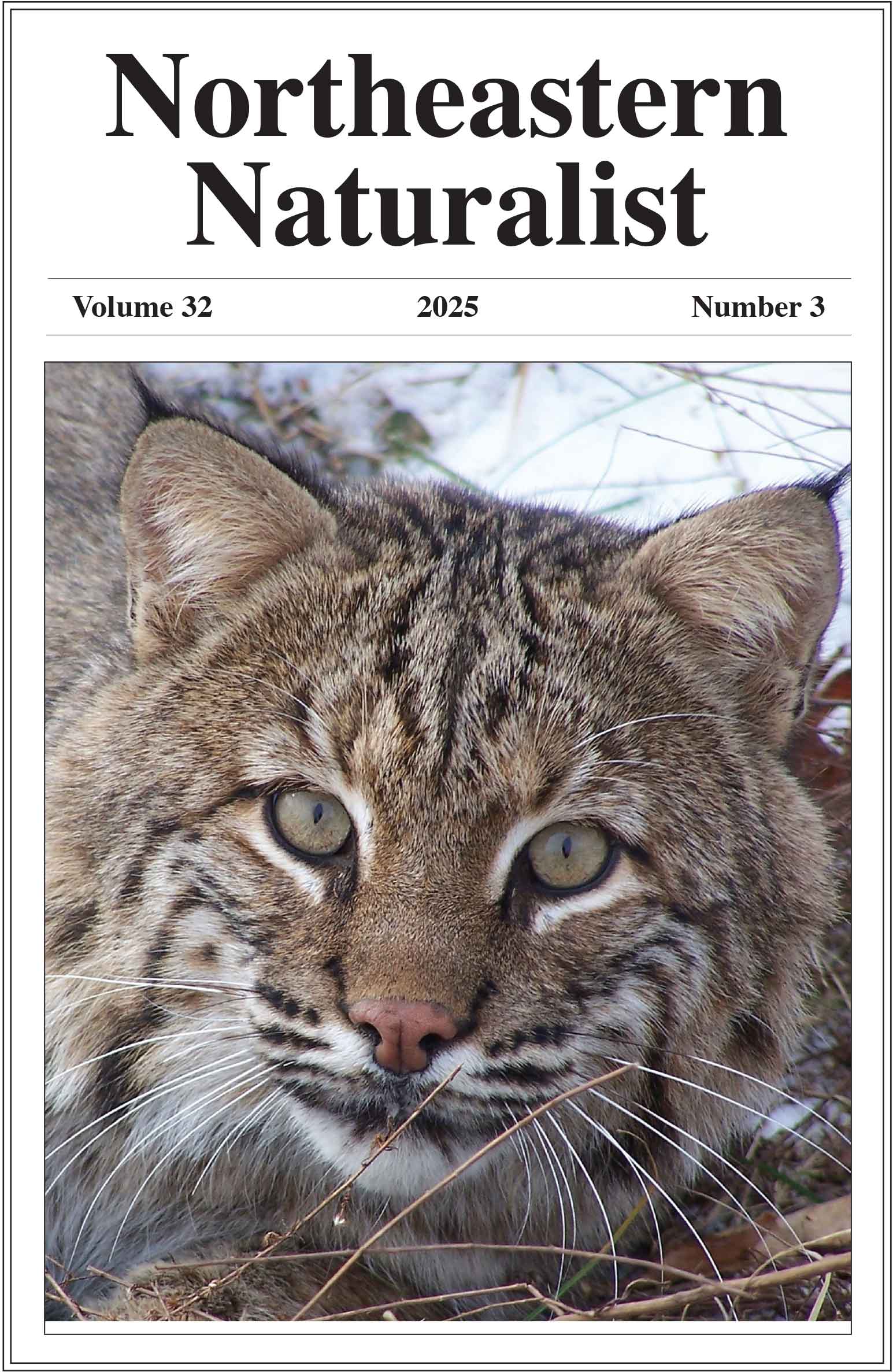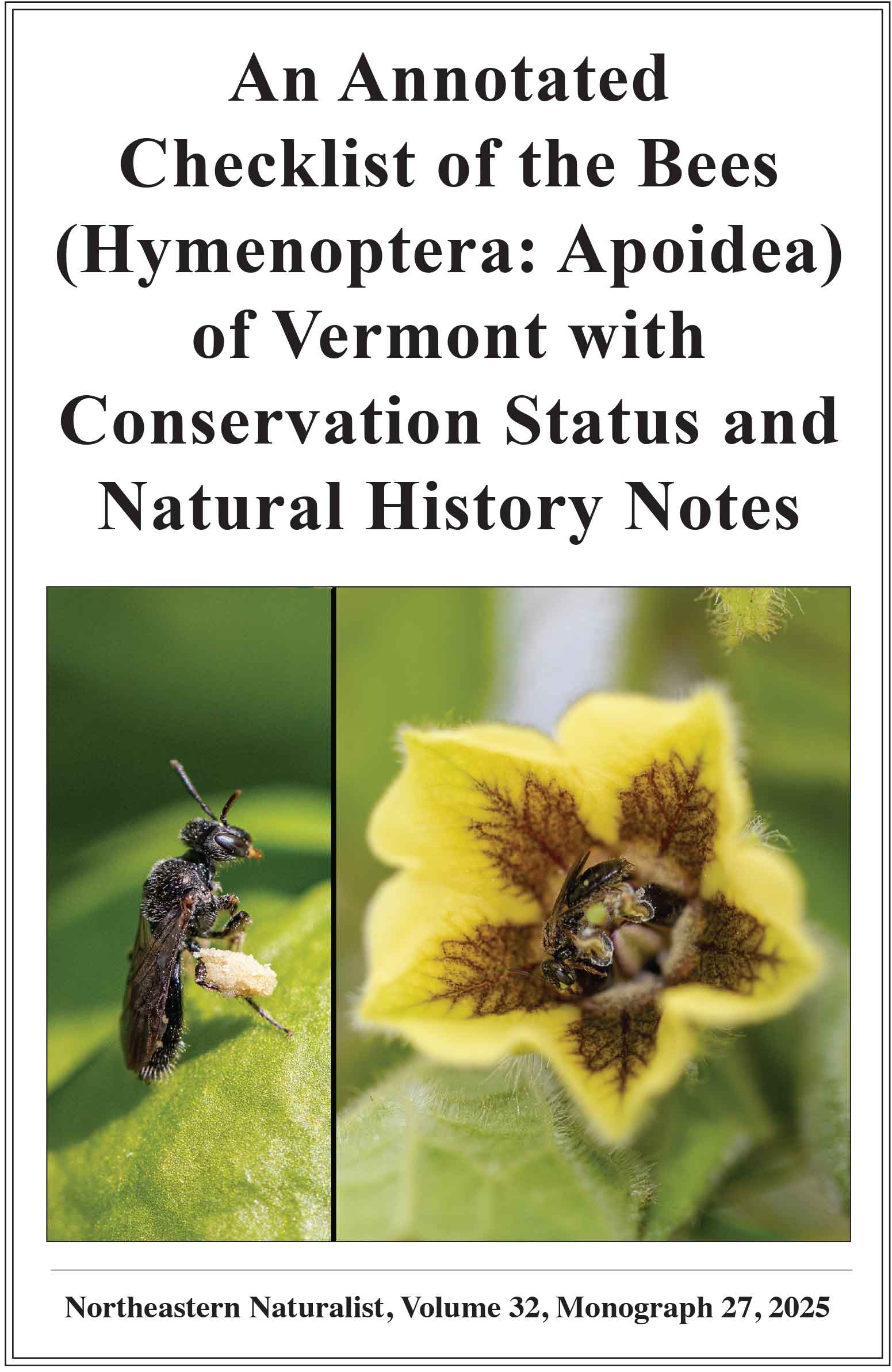Long-term Response of Acadian Flycatcher (Empidonax virescens) to Hemlock (Tsuga canadensis) Deterioration
Megan M. Napoli1, Jim Sheehan2, Michael C. Allen3, Terry L. Master4,*, and Justin R. Clarke5
1Associate Director of Conservation Science and Research, Mohonk Preserve, New Paltz, NY 12561. 2Ecologist, Natural Data Solutions, Lincoln, MA 01773. 3Research Associate, Department of Ecology, Evolution, and Natural Resources, Rutgers University, 14 College Farm Road, New Brunswick, NJ 08901. 4Distinguished Professor of Biology Emeritus, Department of Biological Sciences, East Stroudsburg University of Pennsylvania, East Stroudsburg, PA 18301. 5Ph.D. Candidate, School of Natural Resource Sciences, North Dakota State University, Fargo, ND 58102. *Corresponding author.
Northeastern Naturalist, Volume 32, Issue 2 (2025): 179–196
First published early online: 10 May 2025
Abstract
Few studies have investigated multifaceted responses of individual bird species to forest pest infestations over the long term. Here we document effects of Tsuga canadensis (Eastern Hemlock) deterioration due to Adelges tsugae (Hemlock Woolly Adelgid) infestation on Empidonax virescens (Acadian Flycatcher) nesting behavior, habitat use, and productivity from 2001–2002 to 2013–2014 in northeastern Pennsylvania and northwestern New Jersey. Eastern Hemlock condition deteriorated over the 14-year period in terms of overall tree and branch condition (needle loss, branch die off) but not infestation level or presence of new tree growth. Understory plant density was not significantly different between available (random) and nest plots within either period but increased significantly between time periods. The slow pace of deterioration and varying degree of hemlock decline within study sites allowed observation of a variety of flycatcher behavioral and reproductive responses. Between time periods, mean nest height in hemlocks increased 1.1 m overall, with the most significant mean shift (2 m) occurring in a study site experiencing especially severe hemlock decline, and nesting shifted from hemlock to deciduous trees. Mean pair density, fledgling density, and nest survival declined significantly across study sites between periods, with near complete abandonment by flycatchers at 2 severely infested sites. Our results will guide future studies on invasive species-induced habitat changes and their effects on forest songbirds.
![]() Download Full-text pdf (Accessible only to subscribers. To subscribe click here.)
Download Full-text pdf (Accessible only to subscribers. To subscribe click here.)
Access Journal Content
Open access browsing of table of contents and abstract pages. Full text pdfs available for download for subscribers.
Issue-in-Progress: Vol. 32(4) ... early view
Check out NENA's latest monograph and Special Issue:













 The Northeastern Naturalist is a peer-reviewed journal that covers all aspects of natural history within northeastern North America. We welcome research articles, summary review papers, and observational notes.
The Northeastern Naturalist is a peer-reviewed journal that covers all aspects of natural history within northeastern North America. We welcome research articles, summary review papers, and observational notes.